

Cold War: 1950-1966
Reactivation at Fort Bragg
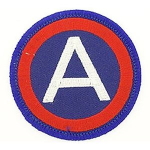 On 18 September, 1950 the 20th
Engineer Combat Battalion was reactivated at Fort Bragg, North Carolina
under the command of LTC Howard W. Penney. The battalion was a Third
Army unit attached to V Corps. The state of the 20th Engineer
Battalion upon reactivation was desperate. LTC Penney, in a letter to
LTC Joseph O. Killian, wrote:
On 18 September, 1950 the 20th
Engineer Combat Battalion was reactivated at Fort Bragg, North Carolina
under the command of LTC Howard W. Penney. The battalion was a Third
Army unit attached to V Corps. The state of the 20th Engineer
Battalion upon reactivation was desperate. LTC Penney, in a letter to
LTC Joseph O. Killian, wrote: "The situation in this battalion is probably the same as in other engineer units: short two-thirds of our officers, short one-third of our cadre, short of most of our equipment, in a word - tough. But the 20th likes it tough."
(Penney would go on to become a three-star general and command the Defense Mapping Agency from 1972 to 1974. )
The companies of the
20th were not activated immediately. Headquarters and Service Company
was activated 18 September with the Battalion, but the companies were
not activated until 1 October 1950 per General Orders 3, 4, and 5 of
Headquarters V Corps. The medical detachment was activated on 20
November 1950 per General Order 6. Other sections included a
maintenance section and an aviation section.
 The companies were filled with soldiers moved from Fort
Devens, Massachusetts and Fort Benning, Georgia. Many of the company-
grade officers were reserve officers called up for extended active
duty. Some of these officers were World War II veterans, and one, CPT
Sten Johnson Jr., became the Assistant S-3, the same position he held
in the 20th Engineer Battalion during World War II.
The companies were filled with soldiers moved from Fort
Devens, Massachusetts and Fort Benning, Georgia. Many of the company-
grade officers were reserve officers called up for extended active
duty. Some of these officers were World War II veterans, and one, CPT
Sten Johnson Jr., became the Assistant S-3, the same position he held
in the 20th Engineer Battalion during World War II.
The battalion
got on with training on the latest techniques of combat engineering.
A capstone exercise was conducted from 13 August to 27 August 1951
called Exercise Southern Pine. Exercise Southern Pine included all
elements of the 20th Engineers and, according to the Motor Pool's
Historical Report of 6 September 1951, the vehicles of the 20th
Engineer Battalion logged 95,806 miles during the exercise with no
accidents. The companies, including HSC, conducted realistic combat
training and smashed road blocks established by the airborne aggressor
forces.
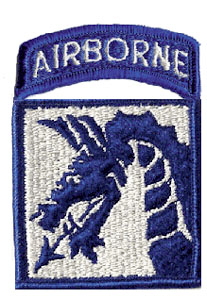 In 1951 the V U.S. Corps
headquarters was transferred to Germany and the XVIII Airborne Corps
assumed command of Fort Bragg. The 20th Engineers were attached to the
new corps.
In 1951 the V U.S. Corps
headquarters was transferred to Germany and the XVIII Airborne Corps
assumed command of Fort Bragg. The 20th Engineers were attached to the
new corps.
On 08 June 1953, the battalion was reorganized and redesignated as the 20th Engineer Battalion.
Over the next three years the Battalion conducted numerous construction projects on Fort Bragg, then participated in Exercise Flash Burn in 1954. Though no copy of the unit's MTOE from 1954 is available, an organization day program dated 18 September 1954 details the size of the Battalion. Within HSC was an Equipment Platoon headed by a warrant officer. It contained 4 Master Sergeants, 15 Sergeants First Class, 10 Sergeants, 22 Corporals, and 40 enlisted members. Company A had a Captain as commander, two Second Lieutenants as platoon leaders, four Master Sergeants, seven Sergeants First Class, 16 Sergeants, 19 Corporals, and 93 enlisted members. Companies B and C were much the same except they were both commanded by First Lieutenants.
The beginning of 1954
brought many construction projects. The Battalion constructed combat
range number 5, DTA range number 10, BAR (Browning automatic rifle)
transition range number 2, road repair at Johnson Rifle Road, M-1
transition range number 3, hand grenade range number 1, squad in
defense range, platoon in night defense, and hand grenade range number
2. The battalion also worked on the following road projects on Fort
Bragg: Washington Road, BAR Transition Road, and Colonel's Creek Road.
These projects were assisted by a clay pit operation run by the 20th.
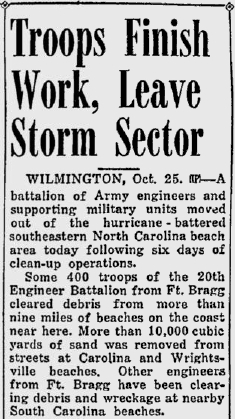
The destruction left in the wake of Hurricane Hazel at the beaches of North Carolina resulted
in the battalion being alerted on the night of 17 October 1954 for
hurricane relief efforts along the coast. The 20th Engineers was
assigned the mission of clearing sand and debris from the streets of
Carolina and Wrightsville beaches and effecting temporary repairs of
utilities where necessary. Attached to the battalion were the 66th
Signal Battalion, 981st Engineer Battalion Construction, 618th Engineer
Light Equipment Company, 64th Engineer Company, 322nd Engineer
Topographic Company, and the 37th Transportation Truck Company.
Equipment used for the relief effort included: 2 D8 12 yard pans, D7
dozers, MRS with blade, D5 bucket loaders, D4 bucket loaders, mobile
crane, grader motorized, 8 5-ton dump trucks, 11 2 1/2 ton cargo
trucks, 12 2 1/2 ton dump trucks, 2 5-ton cargo trucks, 1 1200 gallon
gasoline tanker, 14 3/4 ton trucks, 15 1/4 ton trucks, 2 air
compressors, 1 5-ton wrecker, and 2 flood lighting sets.
From Carolina Beach, the 20th Engineers removed 89,000 cubic yards of sand and debris, and from Wrightsville Beach the battalion removed 32,000 cubic yards of the same. Mayor Michael C. Brown of Wrightsville, NC wrote, "without the help of the 20th Combat Engineers, we would probably at this writing be far from having any semblance of order in our community."
For the rest of 1954 and 1955, the Battalion was
involved in construction and general engineering projects at Fort
Bragg, NC and Fort Jackson, SC. The battalion constructed the Fort
Bragg Post Hospital parking lot and combat range number 4, close combat
range number 3, M-1 transition range number 4 and confidence courses
for the 506th and 502nd Division Artillery at Fort Jackson. Transfer to
Fort Devens
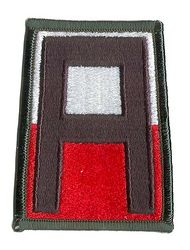 On 22 April 1956, the
Battalion was relieved from assignment to the XVIII Airborne Corps and
Fort Bragg, NC, and assigned to 1st Army with new duty station at Fort Devens, Massachusetts.
On 22 April 1956, the
Battalion was relieved from assignment to the XVIII Airborne Corps and
Fort Bragg, NC, and assigned to 1st Army with new duty station at Fort Devens, Massachusetts.
At Fort Devens, throughout 1956, the battalion conducted minefield testing for the Continental Army Command, then went on to support National Guard and Army Reserve training at Camp Drum, NY. The support at Camp Drum included construction, rehabilitation, and maintenance of a heavy equipment pool in conjunction with other post units, the operation and maintenance of all ranges and training facilities, and the operation of the bridge section.
The battalion also supported the Hungarian
Refugee Program at Camp Kilmer, New Jersey, after the collapse of the
Hungarian Revolution in the face of Soviet tanks.
Over the next few years, the battalion went through a cycle of working during the winter months at Fort Devens and during the summer months at Camp Drum. Each April, the Battalion moved from Devens to Drum for a period of 160 days to support National Guard and Army Reserve training programs there.
From 1957 to 1959, the
battalion commander was
Lt. Col. Edward E. Bennett.
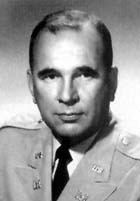
Berlin Crisis
In October 1961, the battalion
was placed on alert in response to the Berlin Crisis and was rotated to Germany. 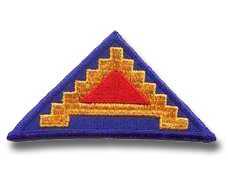
The Battalion, minus Companies B and C, was attached to the 11th Engineer Group in Germany. Headquarters and Headquarters Company was located at Giessen, while Company A was attached to the Berlin Brigade. The mission of the 20th was to provide combat engineering in the defense of Europe. While in Germany, the 20th participated in a Battalion ATT [Army Training Test] and two Seventh Army FTXs [Field Training Exercises] (Exercise Grand Slam and Exercise Fallex).
On 15 March 1963, by General Order Number 13 from Seventh Army, the following provisional redesignations took effect: Company D, 547th Engineer Battalion became Company D, 20th Engineer Battalion; Company E, 547th Engineer Battalion became Company E, 20th Engineer Battalion; and Company D, 299th Engineer Battalion became Company F, 20th Engineer Battalion.
Companies D and F and HHC were co-located with the battalion Headquarters at River Barracks, Giessen, Germany, and Company E was stationed at Taylor Barracks, Mannheim, Germany.
Return to Fort Devens
Headquarters and Headquarters Company returned to Fort Devens in September 1963. Company A was reconstituted at Fort Devens and Headquarters assumed control of the line companies, including B and C, in September 1963. The units resumed garrison and field training activities. As part of its mission of general engineering support, the battalion planned and constructed the post golf course, which remains in use today.
The 507th Engineer Detachment (Utility) and 553d Engineer Detachment (Utility) were attached to the 20th Engineers during this period.
In the fall of 1965, the battalion was alerted for movement to the Republic of Vietnam.
Preparation for Vietnam
On 05 December 1965, the equipment of the 20th Engineers
was loaded on the USNS Lt. James E. Robinson at the Boston Army
Terminal. On 14 December, an advance party of the battalion left Fort
Devens on C-130 aircraft and arrived in Vietnam on 18 December. The
balance of personnel were flown to Oakland, California, where they
boarded the USNS William Wiegel and sailed for Vietnam on 09 December.
On 01 January 1966, the battalion arrived at Cam Rahn Bay, Vietnam,
and were attached to the 35th Engineer Group to conduct operations in
the areas of I and II Corps.